Revealing the future since 1905
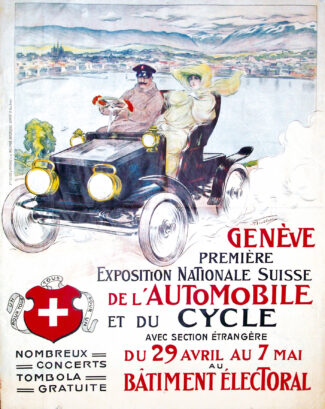
1905
Although it is generally acknowledged that the automobile was “officially” born with Gottlieb Daimler and Wilhelm Maybach’s “Benz Patent Motorwagen”, which was presented at the Paris World Fair in 1889, studies and first experiments with motor vehicles began much earlier. All over Europe, but also in Switzerland!
Isaac de Rivaz, a Swiss citizen, tried to motorize a chariot in 1775 using steam and then gas. Swiss engineers can also be credited with several significant achievements in the automobile sector from the end of the 19th century: front-wheel drive and the gear-transforming flywheel, a kind of automatic gearbox before its time, by Henriod, the overhead camshaft by Popp, the progressive extension pulley gearbox by Weber, and the asphalting of roads developed by Dr Guglielminetti.
The Swiss car industry experienced a period of euphoria at the beginning of the 20th century: there were more than 70 Swiss car manufacturers and the first races and rallies were held.
It was in this context that the first Swiss National Automobile and Cycle Exhibition was organized in Geneva in 1905. Switzerland was then at the heart of the European automobile industry and its automobile production was renowned for its reliable and luxurious products.
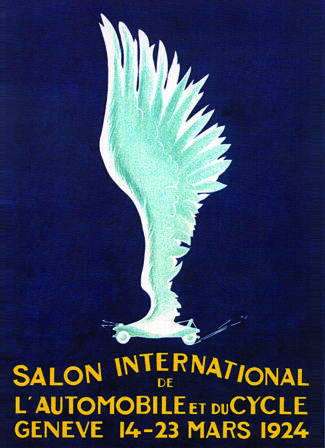
1924
The 4th National Automobile and Cycle Exhibition of 1923 laid the foundations for the event to become international: the authorities provided a test track on the roads on the left bank of Lake Geneva and in November, the “Comité permanent du Salon International de l’Automobile” (permanent committee of the International Motor Show), which is still the organizer and holder of the rights to the GIMS today, was created.
The first Geneva International Motor Show of 1924 dazzled with splendors but few technical innovations were presented. Some experts at the time even dared to claim that the automobile had reached its limits… The democratization sought by Henry Ford with his Ford T struggled to convince in Europe, where the car remained a privilege of the wealthy: it had to be imposing, powerful and luxurious to show its success.
Nevertheless, the 1924 edition of the Motor Show made Geneva one of the European capitals of the automobile; the exhibition area was doubled compared to 1923.

1926
In 1925, the number of visitors exceeded 100,000 for the first time. The “Bâtiment Electoral” from the early days of the Motor Show and the temporary annexes built on the adjacent on the “Plaine de Plainpalais” were too small. The construction of a new “Palais des Expositions”, approved in 1925, enabled the 1926 edition – exceptionally moved to June due to construction work – to increase the exhibition space from 6,200 to over 13,000 m2.
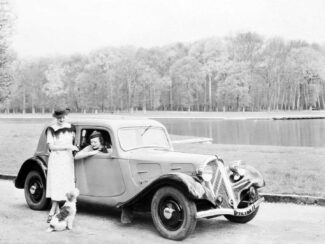
1935
The Citroën Traction Avant is the world’s first unibody front-wheel-drive car. A range of mostly 4-doors saloons and executive cars were made with 4 or 6-cylinders engines from 1934 to 1957. The Traction Avant pioneered integrating FWD and 4-wheel independent suspension into a mass-production, crash resistant, unitary, monocoque body.
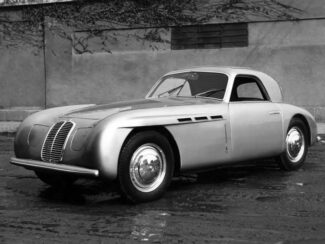
1947
The A6 1500 Gran Turismo grand tourer was Maserati’s first production road car. Development began in 1941 by the Maserati Brothers but was interrupted when priorities were given to wartime production and was not completed until after the war.
The first chassis, bodied by Pinin Farina, debuted at GIMS 1947. This first prototype was a 2-door, 2-seat, 3-window Berlinetta with three square portholes on its fully integrated front wings, a tapered interior and futuristic hidden headlamps. The car was produced in small numbers and most were bodied by Pinin Farina.
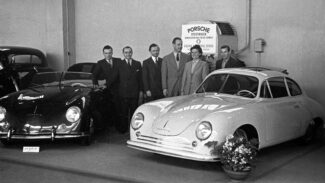
1949
On 17 March 1949, at GIMS, Porsche introduced itself to an international public audience for the first time. The young brand showcased the 356 Coupé and 356 Cabriolet built at that time in the production facility in Gmünd (Austria). This participation laid the foundations for a very strong relationship between GIMS and Porsche, which has taken part in every edition since, including that of GIMS Qatar in Doha in 2023, introducing striking new models each time.
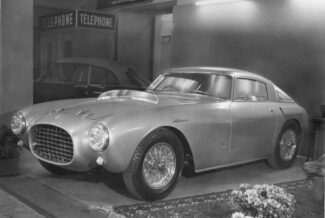
1953
The 250 MM Berlinetta was the very first Ferrari ever launched at the GIMS. It was based on the 1952 Mille Miglia-winning Ferrari 250 S prototype, resulting in the 1953 production model using the ‘MM’ name after the epic road race. Using the new Gioachino Colombo-designed 3.0-litre V12 engine, its performance was tested and proven at the Mille Miglia and many other events. Shining under the Geneva spotlights, its elegant Pinin Farina coupe bodywork broke new design ground.
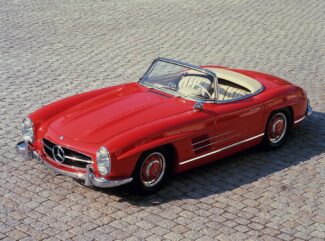
1957
Designed primarily for Californian customers, the Mercedes-Benz 300 SL Roadster made its public debut at the GIMS 1957. Compared to the Coupé from which it was derived, the 300 SL Roadster’s tubular chassis was modified to create more space in the boot, and the lower door sill allowed a more conformable entry. The Roadster also raced on American circuits, competing in the same class as the Maserati 300S, Ferrari Monza or Aston Martin DB3S.
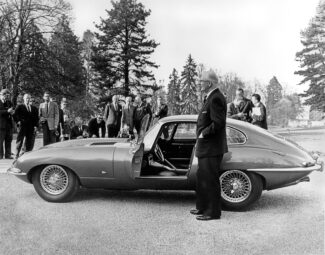
1961
“The most beautiful car ever made” according to Enzo Ferrari himself, the Jaguar E-Type made its debut at GIMS 1961. The presentation of the E-Type was made memorable by the iconic journey from Coventry to Geneva. Ahead of the GIMS 1961, Bob Berry – Jaguar’s PR Manager at the time – and Norman Dewis – Jaguar’s Test and Development engineer – drove two E-Type (coupé and a convertible) overnight for over 1200 km. Both cars were requested to meet the incredible demand for test drives on the opening day of the show. It was worth it, as Jaguar left Geneva with over 500 orders.
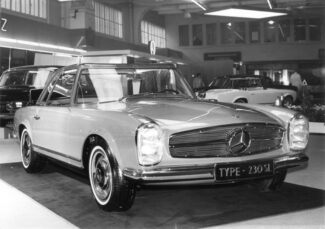
1963
Prof. Fritz Nallinger, Mercedes-Benz Technical Director at the time, presented the 230 SL at the GIMS 1963 as follows: “Our aim was to create a very safe and fast sports car with high performance, which despite its sports characteristics, provides a very high degree of traveling comfort”. With its inline 6-cylinder engine featuring multi-point fuel injection, numerous aluminium body parts to reduce weight, state-of-the-art suspension, powerful brakes and radial tires, the Mercedes-Benz W113 (internal code) roadster set new standards in the category. It was the distinctive concave shape of the hardtop that gave the model its “pagoda” nickname.

1966
The Lamborghini Miura is the first supercar to feature a two-seater rear mid-engine layout, which has since become the standard for high-performance sports-, super- and hypercars. When it came out, the Miura was the fastest production road car. At GIMS 1966, the Miura received glowing reception from visitors and the motoring press alike, all impressed by Marcello Gandini’s styling and the car’s revolutionary mid-engine design. The Miura remained in production until 1973, when it was replaced by the Countach.
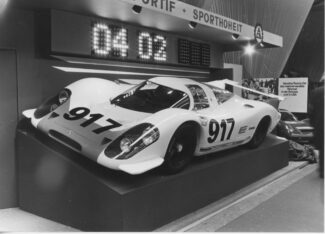
1969
With the aim of winning its first overall victory in the 24 Hours of Le Mans, Porsche entered the Group 4 sports cars category. However, CSI type homologation for racing was obtained by producing at least 25 units of the model entered. The Porsche 917 was manufactured in 1969, and the chassis number 001 was unveiled at GIMS 1969. It was the start of an unprecedented success story in racing, starting with victory in the 24 Hours of Le Mans in 1970 and 1971, followed by dozens more on all the racetracks of the world until 1975.
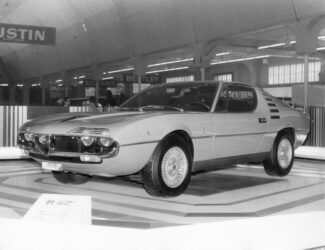
1970
The Alfa Romeo Montreal was introduced as a concept car in 1967 at the Expo 67 held in Montreal. The body was designed by Marcello Gandini at Bertone and the mechanicals was borrowed from the Giulia. At GIMS 1970, Alfa Romeo unveiled the production car, technically quite different from the concept. It featured a 2,6-litre, dry-sump lubricated, cross-plane V8 engine of 200 PS, derived from the 2-litre V8 used in the 33 Stradale in Tipo 33 sports prototype racer. None of the Montreal were sold in… Montreal since Alfa Romeo didn’t develop a North American version to meet the emission control requirements applied in the USA and Canada.
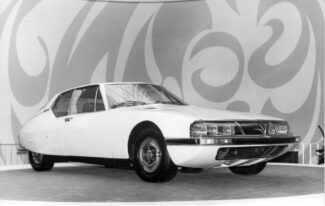
1970
In 1968, Citroën purchased Maserati with the intention of harnessing Maserati’s high-performance engine technology to produce a true GT car, combining the sophisticated Citroën hydraulic suspension with a Maserati V6.
The result was the Citroën SM, first shown at the GIMS 1970. As true flagship, the SM was competing with high-performance GT such as Alfa Romeo, Aston Martin, Ferrari, Jaguar, Lotus, Mercedes-Benz or Porsche. The SM featured many unusual innovative features introduced on the DS: hydro-pneumatic self-leveling suspension, self-leveling lights that swiveled with the steering, variable assist power steering and disc brakes at all four corners.

1971
The Lamborghini Countach was one of the most iconic supercar from the 70s to the 90’s. Designed by Marcello Gandini for Bertone, it was the first car to adopt the sharply angled “Italian Wedge” shape. It replaced the Miura, and took on its most successful aspects, such as the rear mid-engine, RWD layout along with many new engineering and styling innovations. The Countach was also the first production car to incorporate scissor doors. The Lamborghini Countach LP500 (first prototype) was unveiled at GIMS 1971, while production didn’t begin until 1974, after two further prototypes (presented at GIMS 1973 and GIMS 1974).
The Countach remained in production until 1990, when it was replaced by the Diablo.

1972
The Turbo Concept sports car was built by BMW as a celebration for the 1972 Summer Olympics in Munich and unveiled at GIMS 1972. It was designed by Paul Bracq with gullwing doors and was based on a modified 2002 chassis with mid-mounted engine. Only two were ever built. BMW later used the Turbo’s design themes on the M1, the 8 Series and the Z1.
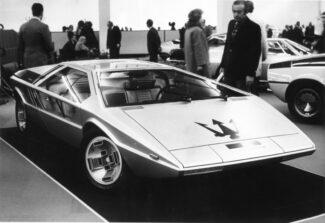
1972
The Maserati Boomerang is a concept car designed by Giorgetto Giugiaro. Based on Maserati Bora chassis, the Boomerang was revealed at GIMS 1972. The Boomerang’s design incorporates all the styling gimmicks that will be found on future models by Giugiaro: 1973 VW Passat Mk1, 1974 VW Golf Mk1, 1976 Lotus Esprit, 1979 Lancia Delta and Maserati Quattroporte and 1981 DeLorean.

1975
The Camargue is a two-door saloon manufactured by Rolls-Royce. Designed by Pininfarina, it was the first post-war production Rolls-Royce not designed in-house or by “usual” coachbuilders such as Mulliner-Park Ward, James Young, Hooper, etc. At launch at GIMS 1975, the Camargue was the Rolls-Royce flagship and the moste expensive production car in the world.
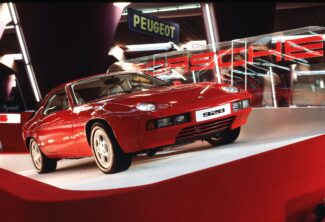
1977
Originally developed to cater for an evolving automotive market, the Porsche 928 was ultimately intended to replace the Porsche 911 as flagship model. It combined the handling and performance aspects of a sports car with the ride, load space, and comfort of a luxury car. Presented at GIMS 1977, the 928 was the company’s first production V8-powered model and its only coupé powered by a front-mounted V8 engine. On its commercial launch in 1978, the 928 also won the European Car of the Year award, remaining to date the only sportscar to do so.
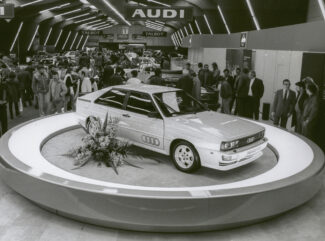
1980
Audi Quattro has made a major contribution to the popularisation of all-wheel drive on road vehicles. The body of the Audi Quattro is based on that of the Audi Coupé, itself a modified Audi 80 B2 with two doors and a hatchback. The Audi Quattro is easily recognisable by its wider wings, specific bumpers, larger rocker panels and larger rear spoiler. The Audi Quattro also served as the basis for the Quattro A1, A2 and Sport Quattro, which made history in Group B rallying. Thanks to them, Audi won the World Rally Championships in 1982 and 1984 and finished second in 1983 and 1985.
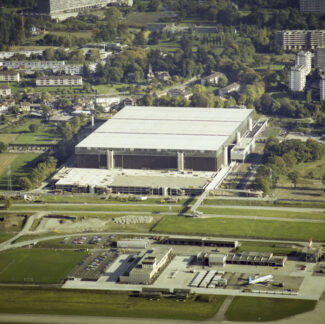
1982
The 1980s were marked in the history of the GIMS by the event’s move to the new Palexpo halls, totalling 58,000 m2 exhibition surface. Inaugurated in December 1981, Palexpo hosted the 52nd edition of GIMS in March 1982. It was a huge popular success, with more than 580,000 visitors. The Palexpo was then expanded three times: in 1987 with Hall 5, in 1995 with Hall 7, and in 2003 with Hall 6 built above the A1 motorway. The seven halls total 102,000 square meters of exhibition space.
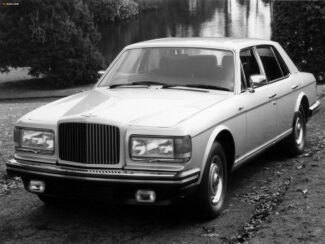
1982
At the GIMS 1982, Bentley presented the Mulsanne Turbo. Since the mid-50s, Bentley and its parent company Rolls-Royce mainly practiced «badge engineering», marketing identical models under different brands. Bentleys were Rolls-Royces models with a Bentley grille and logos. Although its name evoked Bentley’s glorious past at Le Mans in the 20s, the Mulsanne, launched in 1980, remained a Rolls-Royce Silver Spirit behind its grille. The Bentley Mulsanne Turbo will help to further differentiate the brands. Following in the footsteps of the legendary Le Mans supercharged Bentley 4 1/2 Litre «Blower», engineers developed a turbocharged version of the venerable 6,75-litre V8. The Mulsanne Turbo transformed Bentley’s fortune and gave the brand a new identity. It redefined what is still today the main characteristic of a Bentley: that feeling of permanently available power reserve and effortless torque.
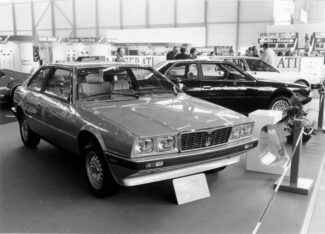
1982
The Biturbo was the founding member of a family of executive grand tourer produced by Maserati between 1982 and 1994. The original Biturbo presented at GIMS 1982 was a two-door, four-seater coupé featuring, as the name implies, a twin-turbocharged 2-litre V6 engine. To fit with Maserati brand class, the interior was luxurious. All Maserati models then introduced until 1997 were based on the original Biturbo architecture including the later Shamal and Quattroporte with V8 biturbo engines.

1984
Superficially, the GTO unveiled at the GIMS 1984 might have resembled the contemporary Ferrari 308, but its elegantly curvaceous exterior belied the beast that it in fact was. Fully justifying the use of the legendary ‘GTO’ badge, it was very close to being a racing car for the road, as evidenced by its use of lightweight composite materials and adjustable suspension. Its 2.8-litre, eight-cylinder engine (which lent it, unofficially, a ‘288’ prefix) was twin-turbocharged and capable of 400 PS – extraordinary for the time. The Ferrari 288 GTO is by many considered as the first Ferrari super-/hypercars, paving the way for the F40, F50, Enzo and LaFerrari.
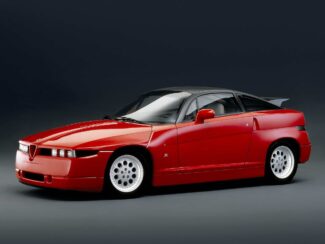
1989
Built between 1989 and 1991 by a partnership between the design studios of Alfa Romeo and Fiat and Zagato for the manufacturing, the Alfa Romeo SZ (also named ES-30) was presented at GIMS 1989. Its unusual design can be attributed to the use of early computer-aided design and manufacturing. Mechanically, the SZ was based on the Alfa Romeo 75. From 1992 to 1994, a convertible version of the SZ, the RZ was produced.
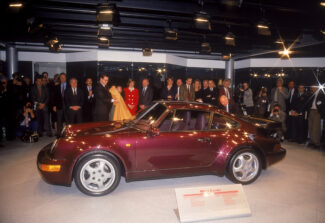
1990
At GIMS 1990, Porsche introduced the 911 (964) Turbo, as the successor of the 930. This first version of the new 911 Turbo featured the 3.3-litre engine from the 930, with several minor revisions that made the engine smoother, less prone to turbo-lag and more powerful. In 1993, the 3,3 Turbo will be replaced by the 3,6-litre Turbo. The 964 Turbo was the end of an era, the last of the single turbo rear-wheel drive 911 Turbos.
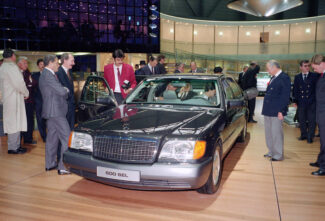
1991
It took no less than 10 years to develop the Mercedes-Benz S-Class (W140), unveiled at GIMS 1991. Considered an “engineer’s car”, it housed 6-cylinder, V8 and V12 engines under its enormous bonnet. It featured also a number of innovations that have since become industry standards, such as ESP. The S-Class was the choice of many royalty and heads of state as their ceremonial car.
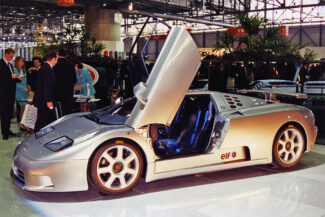
1992
In the mid-80s, Italian industrialist Romano Artioli relaunched the Bugatti brand, but in Italy in the suburb of Modena. In 1991, the Bugatti EB110 GT was launched and 6 months later, at the GIMS 1992, its ultra-sporty version, the EB110 Super Sport, was presented. Lighter by 150 kg than the EB110 GT, its quad-turbocharged V12 developed 612 PS (compared with 560 PS for the GT). One of the lucky customers was Michael Schumacher, who bought a yellow model in 1994. Artioli’s Bugatti adventure came to an end in 1995 when the group went bankrupt. It wasn’t until 1998 that the brand was reborn by being bought out and integrated into the VW group.

1994
Since the early 1980s, Ferdinand Piëch had wanted to make extensive use of aluminium in car manufacturing to compensate for the extra weight caused by the Quattro all-wheel drive system. In the early 90s, when development began on the replacement for the Audi V8, the decision was taken to design the first car with a full aluminium structure. The ‘Audi Space Frame’ concept was born. The first-generation A8, unveiled at the GIMS 1994, was the first production car to be equipped with it. Competing with the Mercedes-Benz S-Class and BMW 7 Series, the A8 had an unladen weight of between 1,540 and 1,980 kg, depending on the version and engine, while its rivals weighed in at around 2 tonnes minimum.

1995
What better way could there be for Ferrari to celebrate its 50th anniversary than to make the ultra-desirable F50? In fact, the F50 arrived a little prematurely for that golden 50th, being unveiled at the GIMS 1995. This was the closest thing to a road-going Formula 1 car that Ferrari had yet built, using F1-style construction, materials and aerodynamics. Its utterly hardcore specification included zero power assistance for the steering and brakes, while its 520 PS V12 engine provided unmatched performance.
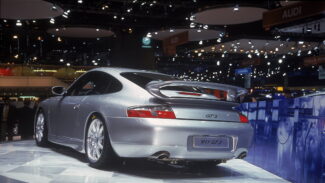
1999
The “GT3” nameplate was introduced in 1999 as part of the first generation of the Porsche 911 (996) model range as a homologation model for the cars entered in the FIA GT3 Cup. As with Porsche’s previous 911 RS models, the 996 GT3 was focused on racing, and so was devoid of items that added unnecessary weight to the car. Its engine, the so-called “Mezger” is naturally aspirated and based on the unit used in the 962 and 911 GT1 race cars.
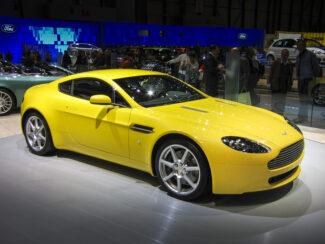
2005
Two years after unveiling the AMV8 Vantage concept, Aston Martin lifted the veil on the V8 Vantage at GIMS 2005. It is intended as a more focused model to reach out to potential buyers of cars such as the Porsche 911. The Vantage remained in the brand’s catalogue for 13 years, first with a 4.3-litre and then a 4.7-litre V8, as a roadster and in a number of limited editions. A V12 version also made its debut in 2009 and again in 2013 as V12 Vantage S version. The “Baby Aston”, as it was nicknamed, was the brand’s most successful model.
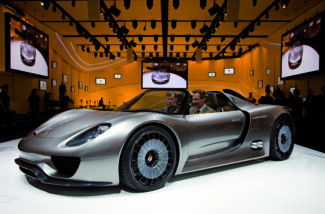
2010
Unveiled as a concept car at GIMS 2010, the Porsche 918 Spyder was the first interpretation of the performance offered by hybrid technolgy. With over 2,000 expressions of interest from customers, the Porsche Board decided to go ahead with production as a limited series. From 2013 to 2015, only 918 units were produced. Its powertrain consists of a ICE V8 derived from the RS Spyder Le Mans Prototype (608 PS), combined with two electric blocks of 129 PS at the front and 156 PS at the rear. Together, they produce no less than 887 PS.
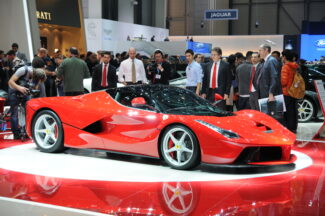
2013
In 2011, Ferrari is testing 5 prototypes of a hybrid hypercar powered by a V12 engine. The result was the Ferrari LaFerrari, presented at GIMS 2013. It is also based on the results of numerous tests carried out with FXX prototype customers programme. The Ferrari LaFerrari features a 6.3-litre V12 in a central rear position combined with a KERS system, inspired by F1, with 163 PS. Together they develop a power output of up to 963 PS. At that time, it is the highest power output of any Ferrari road car whilst decreasing fuel consumption by 40%. 710 units of LaFerrari were produced (500 coupés/210 roadsters “Aperta”).
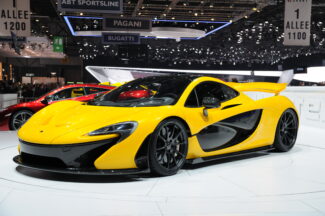
2013
At GIMS 2013, McLaren unveiled the production version of its P1. Strictly limited to 375 units, the P1 is considered the heir to the McLaren F1. The P1 features a twin-turbocharged V8 engine that delivers 737 PS, combined with an electric motor producing 179 PS. Together, they produce a combined power of 916 PS/900 Nm. Together, the McLaren P1, the Porsche 918 Spyder and the Ferrari LaFerrari are considered like the Trinity of hypercars.

2013
The VW XL1 is the third iteration of the Volkswagen 1-liter car. The concept was unveiled at the 2011 Qatar Motor Show, branded as “Super Efficient Vehicle” (diesel PHEV). The XL1 can achieve a combined fuel consumption of 0,9 l/100 km and CO2 emissions of 24 g/km. In 2013, VW is presenting at GIMS the production version of the XL1. It features a 800 ccm two-cylinder diesel engine with 47 PS and a 27 PS electric motor. The combined power is 68 PS / 140 Nm and the all-electric range reaches 50 km. The production will be limited to 250 units, sold only in Europe.
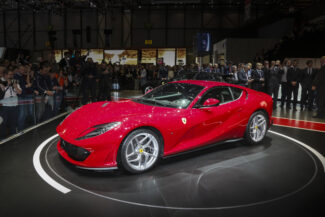
2017
Successor to the F12berlinetta, the Ferrari 812 Superfast made its debut at the GIMS 2017. Its 6,5 litre naturally aspirated V12 was, at the time, the most powerful n/a car engine ever made: 800 PS for the 812 Superfast and GTS, up to 830 PS for the Competizione and Competizione A derivatives launched in 2019. The car includes a mix of active and passive aerodynamics to improve drag coefficient values and downforce.
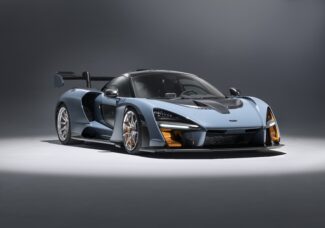
2018
Joining de F1 and P1 in the “McLaren Ultimate Series” model range, the Senna is named after the Brazilian F1 race driver, honouring and giving tribute to his success with the McLaren F1 team between 1988 and 1993. Ayrton Senna won three World Drivers’ Championship titles, four Constructor’s Championship and 35 Grand Prix races with the team. The focus of the McLaren Senna is to achieve faster lap times. In order to do so, McLaren developed a lightweight design that incorporated electronic operated aerodynamics elements. The mechanical base is the McLaren 720S, with a 4 litre twin-turbocharged V8 that delivers 799 PS and 800 Nm. Launched at GIMS 2018, the McLaren Senna runs from 0 to 100 kph in 2,8 s, 0-200 kph in 6,8 s and 0-300 kph in 17,5 s. Top speed: 335 kph. Only 500 units of the Senna were built.
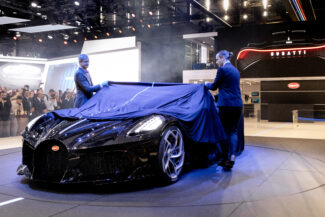
2019
The Voiture Noire is a one-off special introduced at the GIMS 2019. Based on the Bugatti Chiron, the design of the car harkens back to the Type 57 SC Atlantic and is a celebration of the company’s distinctive design history. The Voiture Noire is powered by the same 8 litre quad-turbocharged W16 engine from the Chiron having the same power output figures (1500 PS). At the time, the Bugatti La Voiture Noire was one of the most expansive cars built.
